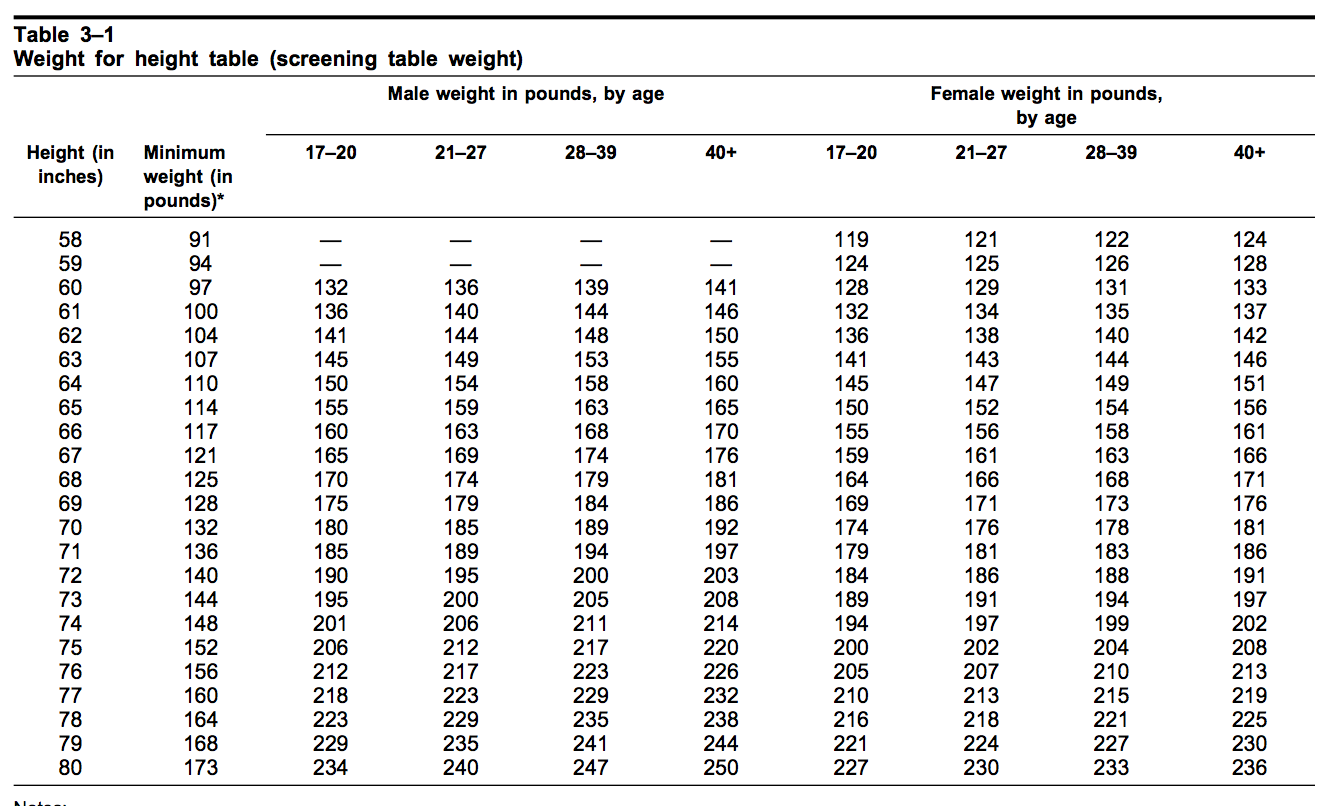The Army's height and weight standards play a crucial role in maintaining the overall physical fitness of soldiers. These guidelines ensure that all service members meet certain physical criteria that are essential for the demands of military life. Adhering to these standards is not just about aesthetics; it’s about operational readiness and the ability to perform tasks effectively. As such, both height and weight are monitored closely to uphold the Army's commitment to excellence and readiness.
The Army's physical fitness requirements are designed to promote a healthy lifestyle while ensuring that soldiers can execute their duties effectively. The standards vary across different branches of the military, but the core principles remain the same. These guidelines not only help in the selection process of new recruits but also provide a framework for existing soldiers to maintain their fitness levels throughout their careers.
Understanding the Army's height and weight standards is essential for anyone considering a career in the military. Whether you are a potential recruit or someone interested in the fitness requirements of the armed forces, this guide will provide valuable insights into what you need to know about these standards, including their significance, measurement processes, and implications for service members.
What are the Army Height and Weight Standards?
The Army height and weight standards are specific metrics that soldiers must meet to ensure they are physically fit for service. These standards are typically outlined in Army Regulation 600-9, which details the requirements for body composition and physical fitness. The standards take into account both height and weight, with specific charts available to determine the acceptable ranges for different heights.
How Are Height and Weight Measured in the Army?
Measurements for height and weight in the Army are conducted under controlled conditions to ensure accuracy. Soldiers are typically weighed in their physical training uniforms, which helps to standardize the process. Height is measured using a stadiometer, with soldiers standing straight against the wall and looking straight ahead.
Why Are Height and Weight Standards Important?
The height and weight standards are crucial for several reasons:
- **Operational Readiness:** Soldiers must be fit enough to perform their duties, which often require both physical endurance and strength.
- **Health and Wellness:** Maintaining a healthy weight can reduce the risk of injury and illness, which is vital for long-term service.
- **Team Cohesion:** Uniformity in physical standards contributes to a sense of equality and teamwork among soldiers.
- **Public Perception:** Maintaining a fit military helps to uphold the public's trust and confidence in the armed forces.
What Happens If a Soldier Fails to Meet the Standards?
Failure to meet the Army height and weight standards can have significant consequences for soldiers. If a soldier does not meet the required measurements during an assessment, they may enter a program focused on weight control and fitness improvement. Continued failure to meet the standards can lead to administrative action, including potential separation from the service.
Are There Exceptions to the Height and Weight Standards?
Yes, there are exceptions in certain cases, particularly for soldiers with significant muscle mass or those who participate in specific roles where physical size may vary. The Army recognizes that not all individuals fit neatly into the height and weight charts due to variations in body composition. In such situations, soldiers may undergo further assessments to determine their overall fitness and capability.
How Can Soldiers Maintain Compliance with Height and Weight Standards?
Soldiers can take several proactive steps to maintain compliance with the Army height and weight standards:
- **Regular Exercise:** Engaging in a consistent fitness program that includes both cardiovascular and strength training.
- **Healthy Eating:** Following a balanced diet that supports overall health and weight management.
- **Routine Assessments:** Regularly measuring height and weight to monitor progress and make necessary adjustments.
- **Seek Guidance:** Utilizing resources such as fitness trainers or nutritionists available within military facilities.
What Resources Are Available for Soldiers?
The Army provides various resources to assist soldiers in meeting height and weight standards. Fitness programs, nutrition workshops, and wellness counseling are part of the support system available to help soldiers stay within the required limits. Additionally, many bases have fitness centers equipped with the necessary tools for soldiers to achieve their physical fitness goals.
Conclusion: The Importance of Height and Weight Standards in the Army
In conclusion, the Army height and weight standards are vital for ensuring that soldiers are physically prepared for the challenges they may face in service. By adhering to these guidelines, service members not only promote their health and wellness but also contribute to the overall effectiveness and readiness of the military. With the right resources and commitment, meeting these standards is an achievable goal for every soldier.
Unveiling The Life Of Kimber Lynn Eastwood
Unraveling Kyler Murray's Ethnicity And Parents: A Deep Dive
Nudism Family Gallery: Embracing Nature And Togetherness


